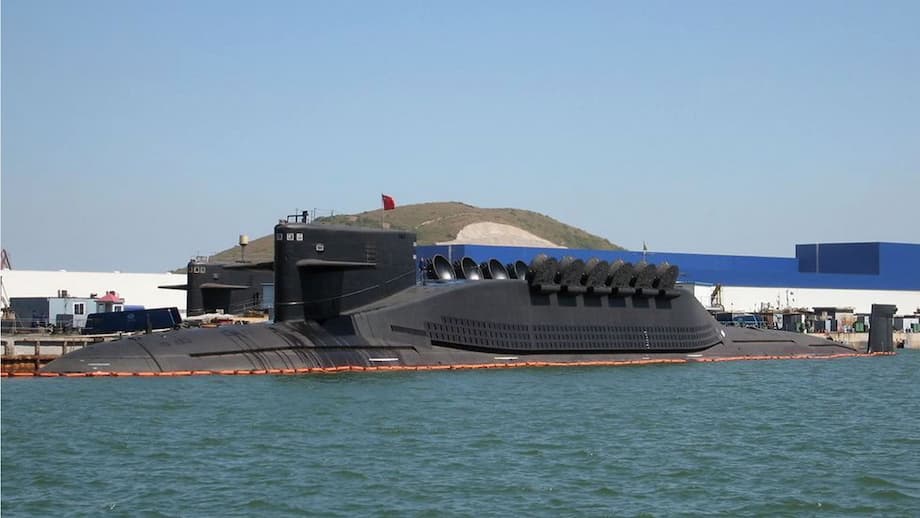A milestone deal after years of uncertainty
Thailand, one of the oldest US allies in Asia, has signed a contract for a Chinese built Type 039A submarine known as the S26T. The agreement resolves a prolonged engine dispute and sets a delivery date in late 2028. The Royal Thai Navy chief, Admiral Jirapol Wongwit, attended the signing at China Shipbuilding and Offshore International headquarters in Beijing. Originally approved as a three boat program, the purchase has been scaled to one vessel because of budget pressure, with a package that includes training and technology transfer.
- A milestone deal after years of uncertainty
- What stalled the project and what unlocked it
- What the S26T can do at sea
- Bangkok’s hedging strategy, not a pivot
- Does one submarine change the regional balance
- Reliability questions and export trade offs
- How Washington and Beijing may respond
- Delivery, training, and Thai Navy planning
- A region choosing options, not sides
- What to Know
The deal matters because it shows the Thai government intends to keep room for maneuver between Washington and Beijing. Rather than a sudden change in alignment, the submarine is widely read as a signal of autonomy and flexibility in Thai strategy. The United States acknowledges the procurement while stressing that Thailand remains a close partner. China, now the fourth largest arms exporter, sees the sale as confirmation that it can deliver major platforms to regional customers.
What stalled the project and what unlocked it
The project dates to 2017 when Thailand agreed to buy the S26T for about 13.5 billion baht, roughly 400 million dollars at the time. The hull was laid in Wuhan in 2019, with handover initially set for 2023. The plan depended on German made MTU 396 diesel engines, but the European Union arms embargo on China blocked those exports. Work slowed and debate in Bangkok intensified, including proposals to swap the submarine for a frigate or cancel the order.
The engine dispute, in plain terms
The S26T uses three core elements for propulsion. Diesel engines charge batteries while snorkeling, large battery banks deliver quiet electric drive, and air independent propulsion (AIP) supports extended submerged operations. Germany’s MTU engines have a long service record in many navies. China offered its CHD620 engine instead. Navy engineers and outside observers questioned whether the Chinese unit matched the noise and reliability profile expected for a modern submarine, and verification was hard because independent testing data was limited.
Why Thailand accepted the Chinese engine
Beijing conducted trials of the CHD620 and provided documentation to Bangkok. Thai authorities say the engine satisfied performance and safety requirements. Accepting the Chinese engine unlocked construction but added time. The program now includes a wider training and technology transfer package, and the build schedule has been lengthened by about 40 months, pushing delivery to the end of 2028.
What the S26T can do at sea
The S26T is an export version of the Type 039A Yuan class. It is a conventional diesel electric submarine with an air independent propulsion system, often described as a Stirling type. The design emphasizes quiet operations, a teardrop hull with anechoic tiles, and a skewed propeller to reduce noise. The package advertised for export includes endurance of up to about 65 days at sea, long range on the surface or while snorkeling, and extended silent patrols underwater.
Air independent propulsion explained
AIP allows a conventional submarine to run its electric motor underwater without access to atmospheric oxygen. In simple terms, the boat can generate electricity while submerged by using a small amount of liquid oxygen and a closed cycle heat engine. That lets the submarine stay hidden for one to two weeks without surfacing. AIP does not match the unlimited endurance of a nuclear submarine, but it narrows the gap in persistence and stealth during peacetime patrols or in coastal waters.
Sensors and weapons
Public descriptions of the S26 family point to six 533 millimeter torpedo tubes, with options to launch heavy torpedoes, anti ship cruise missiles, and to lay naval mines. Export combat systems often vary by customer, and details of the Thai configuration have not been released. The Type 039A in Chinese service is thought to have more advanced sensors and software than export models. Even with a more basic export fit, a quiet AIP boat can threaten surface ships, collect intelligence, and complicate the planning of any adversary.
Bangkok’s hedging strategy, not a pivot
Thailand’s relationship with the United States is deep. The two countries signed a treaty of amity in 1833. Thailand hosted major US operations during the Vietnam War and has participated in US led coalition missions in later decades. The alliance weathered strains after the 2014 coup, when Washington curtailed some military assistance and training. Since then, cooperation has been rebuilt in parts, even as Thai leaders expanded engagement with China.
Thai diplomacy is often called bamboo, bending without breaking. Successive governments have tried to preserve freedom of action by spreading risk and avoiding exclusive commitments. Beijing is now Thailand’s largest trading partner, while the United States remains a prime market for Thai exports and a source of investment and high end technology. Buying a single Chinese submarine aligns with this balancing instinct. It builds a channel with China in naval technology while keeping alive the US alliance and extensive combined exercises such as Cobra Gold.
The submarine purchase, scaled down from three hulls to one, is best seen as political signaling. It tells both superpowers that Bangkok wants options. It does not automatically change Thai doctrine or procurement priorities, which still include Western and regional partners for training, maritime domain awareness, and air power.
Does one submarine change the regional balance
The deal will make Thailand the sixth Southeast Asian navy with submarines, joining Indonesia, Malaysia, Myanmar, Singapore, and Vietnam. Several of those fleets are small, and many submarines spend long periods in maintenance or training. Even so, the spread of undersea capability across the region is real, and it gives countries a way to watch shipping lanes and raise the cost of coercion close to home.
A single diesel electric boat is a potent but limited asset. It will take years to train crews, write doctrine, and practice tactics with surface ships and maritime patrol aircraft. The submarine is likely to operate in the Andaman Sea and the Gulf of Thailand, environments that present different challenges. The Gulf is shallow and busy. The Andaman Sea connects to the Bay of Bengal and the broader Indian Ocean. Presence in both waters gives Bangkok new tools to monitor sea lines of communication.
Reliability questions and export trade offs
Critics of the deal focus on risk. They argue that the CHD620 engine does not have the long service record of its German counterpart and that the Thai Navy has not released independent test data. They also point to a pattern in some Chinese export programs where customers face delays, integration issues, or heavy reliance on Chinese technical support.
Export versions of advanced systems rarely match the domestic fit used by the supplier’s own forces. Submarines are no exception. Buyers often accept simpler sensors, older combat management software, and fewer third party components. That can reduce cost and ease delivery, but it may limit performance in the most demanding missions. Pakistan’s S26 program illustrates the trade. The boats promise a leap in endurance and stealth compared with older designs, yet schedules have slipped and crews will depend on Chinese training and logistics at least in the early years.
Chinese industry is also adapting. It offers financing, training pipelines, and technology transfer to make packages more attractive. Thailand’s contract includes training and a transfer of know how to Thai personnel. The value of these offers will be measured in service life, not at a launch ceremony. A high quality after sales network, a reliable supply of spare parts, and the ability to upgrade systems are the real tests.
How Washington and Beijing may respond
US officials have restated that Thailand remains a close partner and have avoided direct criticism of the purchase. Washington will likely focus on keeping military exercises, education, and maritime cooperation strong. Access and interoperability are the watchwords. If Thai forces gain more exposure to US and allied systems, Bangkok can minimize the risks of dependence on any single supplier.
China will present the sale as proof that it can deliver sophisticated submarines to foreign navies at competitive prices. For Beijing, the contract is both commercial and political. It deepens contact between Chinese shipyards and the Royal Thai Navy and builds habits of cooperation that can extend into training and maintenance.
Both sides will watch for knock on effects. If Chinese platforms expand in the Thai force structure, certain US technologies may become harder for Thailand to acquire. If US engagement grows, Bangkok will have options to diversify upgrades and doctrines. The Thai calculus is to preserve room to maneuver without crossing either power’s red lines.
Delivery, training, and Thai Navy planning
The 40 month extension means the boat will arrive at the end of 2028. That time will be filled with crew selection, language instruction, simulator work, and trials at the shipyard before the voyage to Thailand. Infrastructure on shore, such as piers, workshops, oxygen handling for the AIP system, and secure communications, must be ready before the first patrol.
A modern submarine does not operate alone. The navy will need to pair the S26T with maritime patrol aircraft, surface combatants, and coastal sensors. Exercises will test how the boat shares data, how it avoids friendly forces in crowded waters, and how it contributes to sea denial and intelligence tasks. Thailand will also decide how to split time between the Andaman coast and the Gulf coast, which demands careful logistics planning.
The human factor is decisive. Retaining specialized crews, giving them enough sea days, and budgeting for maintenance will decide whether the program produces a credible undersea capability. Technology transfer and training promised in the contract can help, but sustained funding and realistic training are the foundations of a reliable submarine force.
A region choosing options, not sides
Across the Indo Pacific, states are building flexible networks rather than taking binary positions. Southeast Asian countries are diversifying defense ties with Australia, Japan, India, and South Korea while keeping channels open to the United States and China. The pattern is visible in the rise of minilateral exercises, targeted technology deals, and pragmatic industrial collaboration.
Mainland Southeast Asia has seen a stronger Chinese presence, including deeper ties with Cambodia and Laos. Maritime Southeast Asia has leaned more heavily on the United States and its partners for exercises and patrols. The divergence strains ASEAN unity, but it also reflects varied geography and risk perceptions. Thailand sits between these camps and has crafted a careful balance.
European leaders now speak of strategic autonomy and coalitions that do not force choices between Washington and Beijing. That thinking resonates in Southeast Asia, where leaders prefer agency and steady growth over great power confrontation. Thailand’s submarine decision fits this regional trend. It keeps options open, extracts training and technology from partners, and leaves space to work with multiple security providers.
What to Know
- Thailand signed for one Chinese built S26T submarine after a prolonged engine impasse.
- German MTU engines were blocked by an EU arms embargo on China, leading Bangkok to accept a Chinese CHD620 engine after testing.
- The package includes training and technology transfer and extends construction by about 40 months, pushing delivery to late 2028.
- The S26T features air independent propulsion for extended submerged operations and endurance of up to about 65 days at sea.
- Analysts read the move as strategic autonomy and hedging, not a break with the United States.
- The deal will make Thailand the sixth Southeast Asian navy with submarines, alongside Indonesia, Malaysia, Myanmar, Singapore, and Vietnam.
- Questions persist about the maturity of the Chinese engine and the typical trade offs in export variants.
- Washington is likely to emphasize exercises and interoperability, while Beijing gains a political and industrial link to the Royal Thai Navy.
- The program’s success will depend on crew training, steady funding, and reliable maintenance across the submarine’s service life.




